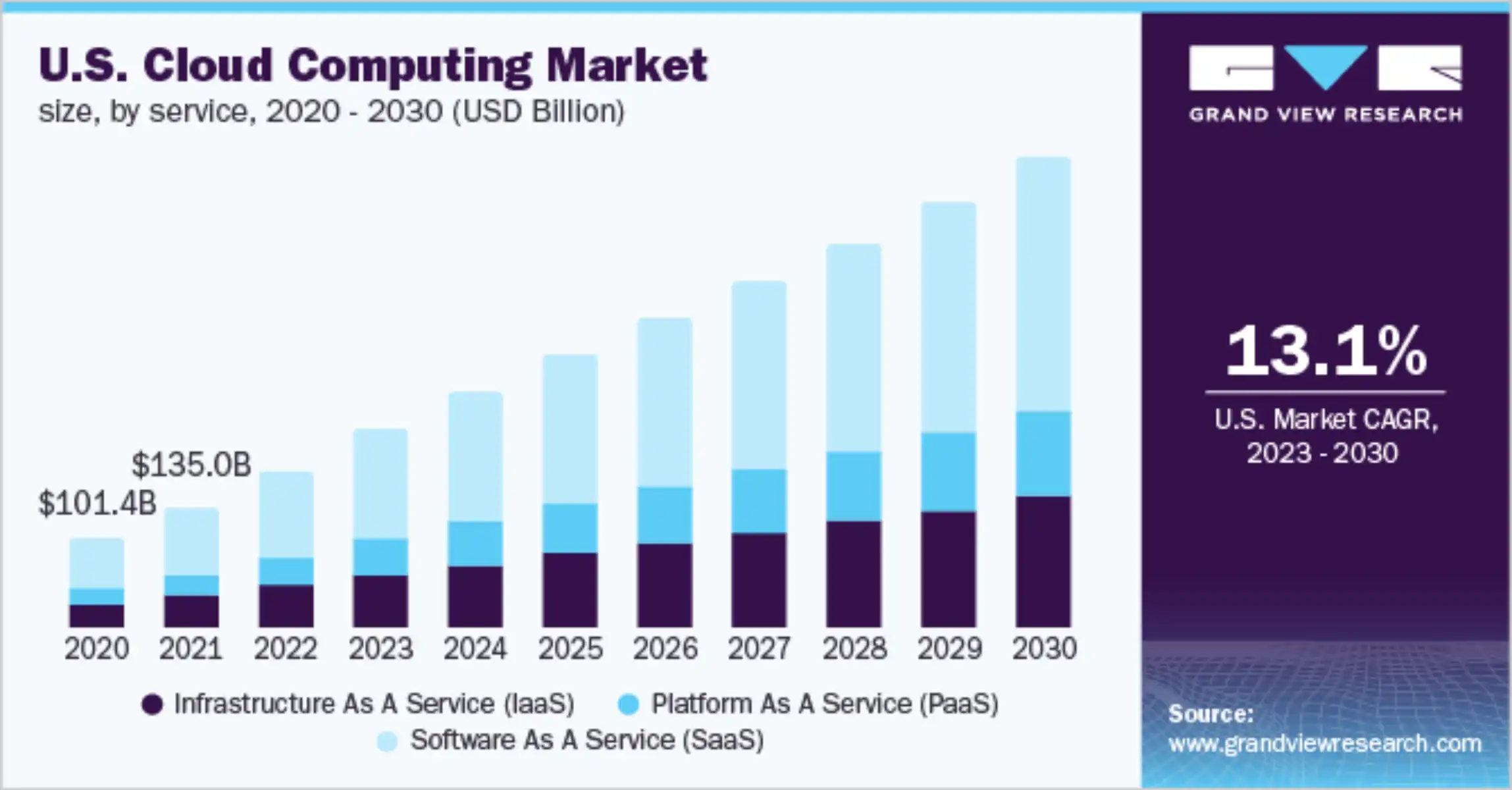
Cloud Migration is the process of moving your company data, servers, and software from being hosted at the office, to being hosted on the internet. Cloud Migration is one of the most important and widespread business trends today. Not long ago, most companies hosted their own servers and data. Tomorrow, companies that still do this will be extremely rare. That’s how fast cloud migration is sweeping the business world.
Improved scalability, flexibility, and cost savings are just a few of the many advantages that come with cloud migration – with so many companies looking to leverage the benefits that nearly 94% of businesses now rely on cloud computing services.
Because there are so many compelling business reasons to migrate to the cloud, if your company has not migrated yet, it probably will in the near future.
Before you jump into the cloud headfirst, however, it’s important to have a solid cloud migration strategy in place.
In this post, we’ll discuss the importance of having a cloud migration strategy and how a managed service provider (MSP) can help you build and implement yours.
Why Have a Cloud Migration Strategy?
The cloud services market is increasing rapidly – projected to expand at a compound annual growth rate (CAGR) of 14.1% from 2023 to 2030.

Image Credit: Grandview Research
That being said, cloud adoption can be a complex process that requires careful planning and execution. Without a solid migration strategy in place, you risk encountering a wide range of problems, including data loss, security breaches, and performance issues.
By having well-thought-out cloud migration strategies, you can minimize these risks and ensure a smooth transition to the cloud.
What Should Cloud Migration Strategies Include?
All good cloud migration strategies should address a variety of concerns, including:
- Scalability: Make sure that your cloud infrastructure can easily handle your current workload as well as future growth. This includes capacity planning, automated resource management, performance monitoring, and more.
- Performance: Ensure that your hybrid, private, or public cloud environment is optimized for maximum performance.
- MSPs can help design a cloud architecture that is optimized for performance, including selecting the appropriate cloud services, optimizing network and storage configurations, and ensuring that resources are distributed efficiently.
- Security: Ensure that the migration process is secure and that all data is protected during the transfer. This includes risk assessment, security planning, network monitoring, incident response, and more.
- Learn more about cyber security and it’s importance with these additional resources.
| Resources: |
- Cost: Minimize costs by identifying and eliminating unnecessary resources and optimizing cloud usage. MSPs can help optimize your cloud costs, ensuring that you are only paying for the resources you need and avoiding unnecessary expenses.
Moving Large Amounts of Data to the Cloud
Did you know that over 100,000,000,000,000,000,000,000 bytes (100 ZB) of data will be stored in the cloud by 2025? That’s a lot of data!
It isn’t surprising that one of the biggest challenges in deploying cloud migration strategies is moving large amounts of data to the cloud. If you have terabytes of data that need to be transferred, you may find that the process is slow and cumbersome.
Here are a few tips on how to move data to the cloud in large amounts.
Leverage Cloud Data Transfer Services: Many cloud providers offer data transfer services that can help you move large amounts of data to the cloud from existing applications or data centers during the cloud migration process.
These services typically use high-speed internet connections and can significantly reduce transfer times. When migrating workloads, be sure to check with your cloud provider to see what cloud based data transfer services they offer.
Use Parallel Data Transfer: Another way to speed up the data transfer process is to use parallel data transfer. This involves breaking up your data into smaller chunks and transferring them simultaneously. By using multiple data transfer threads, you can significantly reduce transfer times.

Other Concerns For Your Cloud Migration Strategy
In addition to the above considerations, there are a few other concerns you should keep in mind when cloud migration planning.
Compatibility: In your application migration, ensure that all your applications and data are compatible with your chosen cloud environment and core architecture.
Data Governance: Ensure that your data governance policies and procedures are up-to-date and that they align with your cloud provider’s policies.
Compliance: Ensure that your cloud provider meets all the necessary compliance requirements for your industry and geography.
Get an MSP That Compliments Your Growth – Not Impedes It
Migrating to the Cloud is Stress-Free With Us on Your Side
Perfect Your Cloud Migration Strategy with Power Consulting
Moving to the cloud can be a transformative step for your business, and it’s important to have a solid migration strategy in place before you make the move. One way to ensure that is to have a cloud migration partner with long experience in cloud migration.
Power Consulting Group can ensure your successful transition to the cloud. We provide detailed recommendations, planning, and pricing for every aspect of the migration. We plan for user impact, training and support. We even provide procurement and logistical (rollout) services.
With the right strategy and tools in place, you can enjoy all the benefits of the cloud while minimizing risk and maximizing performance.
Leverage the expertise of Power Consulting in your digital transformation and receive 24/7 IT support! Learn more about how we can reduce your IT problems by 40-55% in just three months.

